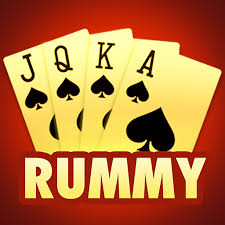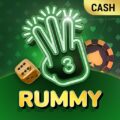Rummy 13 Cards Rules: A Complete Guide
Rummy, particularly the 13-card variant, is immensely popular in India and is enjoyed by people of all ages. This version of rummy combines skill, strategy, and a bit of luck, making it both engaging and challenging. Below is an in-depth guide to understanding the rules and objectives of 13-card rummy. Also Download Happy Teen Patti

—
Objective of 13-Card Rummy
The primary objective in 13-card rummy is to arrange all 13 cards into valid combinations, which include sequences and sets. To win, a player must create:
1. At least two sequences, one of which must be a pure sequence (without any joker).
2. The remaining cards should form either additional sequences or sets.
A player who achieves these combinations first can declare their hand, ending the game.
—
Key Definitions and Terms
1. Sequence: A sequence is a set of three or more consecutive cards of the same suit. For example, 3♥-4♥-5♥.
Pure Sequence: A sequence without a joker. For a valid declaration, at least one pure sequence is required.
Impure Sequence: A sequence that includes a joker. For example, 7♣-8♣-Joker.
2. Set: A set is a group of three or four cards of the same rank but different suits. For example, 8♠-8♥-8♣.
3. Jokers:
Printed Joker: This is a card marked as a joker in the deck.
Wild Joker: A card selected randomly at the beginning of the game that can also act as a joker.
4. Drop and Middle Drop: A player can choose to drop out of a game for a point penalty instead of playing if their hand is weak. A drop at the start incurs a lower penalty, while a middle drop (after drawing a card) incurs a higher penalty.
—
Rules of 13-Card Rummy
1. Players and Decks
Number of Players: Usually played between 2 to 6 players.
Deck: Two standard 52-card decks with one printed joker per deck.
2. Dealing Cards
Each player is dealt 13 cards.
The remaining cards form the draw pile, with one card turned face-up to start the discard pile.
A card from the deck is also turned face-up to act as the wild joker for that round.
3. Gameplay
Turns: Players take turns drawing and discarding cards, aiming to form valid sequences and sets.
Drawing Cards: A player can draw the top card from the draw pile or the discard pile.
Discarding Cards: After drawing, a player must discard one card onto the discard pile.
4. Forming Sequences and Sets
Players must aim to create at least two sequences, including one pure sequence.
The remaining cards can form sequences or sets to complete a valid hand.
5. Use of Jokers
Jokers can substitute for any missing card in a sequence or set.
Pure Sequence Exception: The pure sequence cannot include jokers.
The wild joker changes every game, adding a strategic element.
6. Declaring
Once a player arranges their cards into valid sequences and sets, they can declare their hand.
The declared hand is verified to ensure it meets the winning criteria (one pure sequence and one additional sequence).
7. Scoring
Valid Declaration: If a player declares with a valid hand, they score zero.
Invalid Declaration: If the declared hand is invalid, the player receives the maximum penalty (80 points).
Card Values:
Face cards (King, Queen, Jack, and Ace) = 10 points each.
Number cards hold their face value (e.g., 5♣ = 5 points).
—
Winning the Game
A player wins by making a valid declaration and meeting the following conditions:
1. At least one pure sequence.
2. At least one additional sequence.
3. The remaining cards must be arranged into sets or sequences.
Upon a valid declaration, other players reveal their hands, and their scores are calculated based on unmatched cards.
—
Strategy Tips
1. Focus on Pure Sequence First: This is mandatory, so try to form this early.
2. Use Jokers Strategically: Reserve jokers for impure sequences or completing sets.
3. Minimize High-Value Cards: Discard high-value cards if they don’t fit into a sequence or set, to reduce points if another player declares.
4. Watch Opponents’ Discards: Tracking what cards opponents discard or pick can provide insights into their hands.
—
Conclusion
13-card rummy is a dynamic game that requires strategic thinking and quick decision-making. By understanding the rules and refining your strategy, you can enhance your skills and enjoyment of the game. Happy playing! Also Download Hello Rummy























